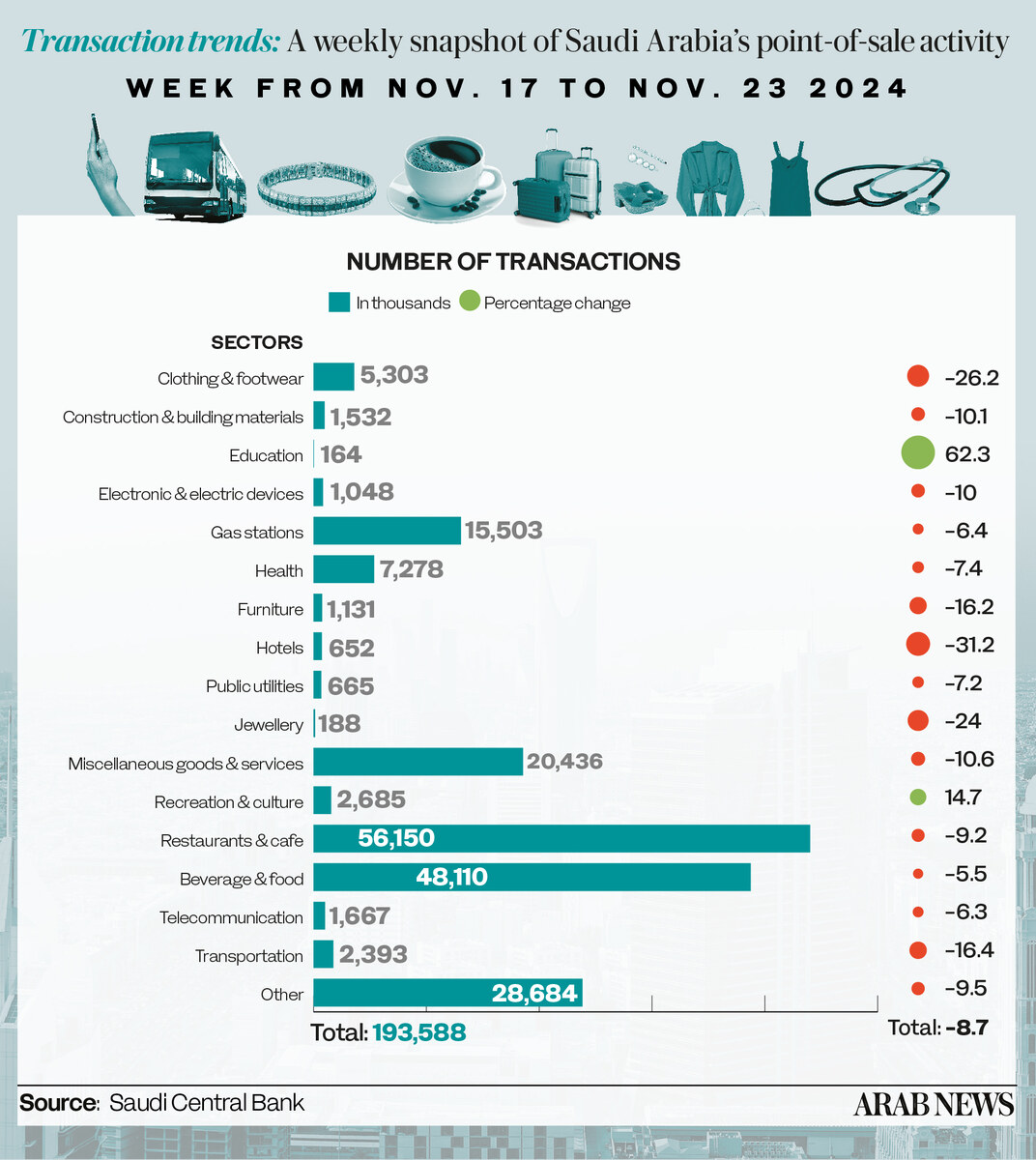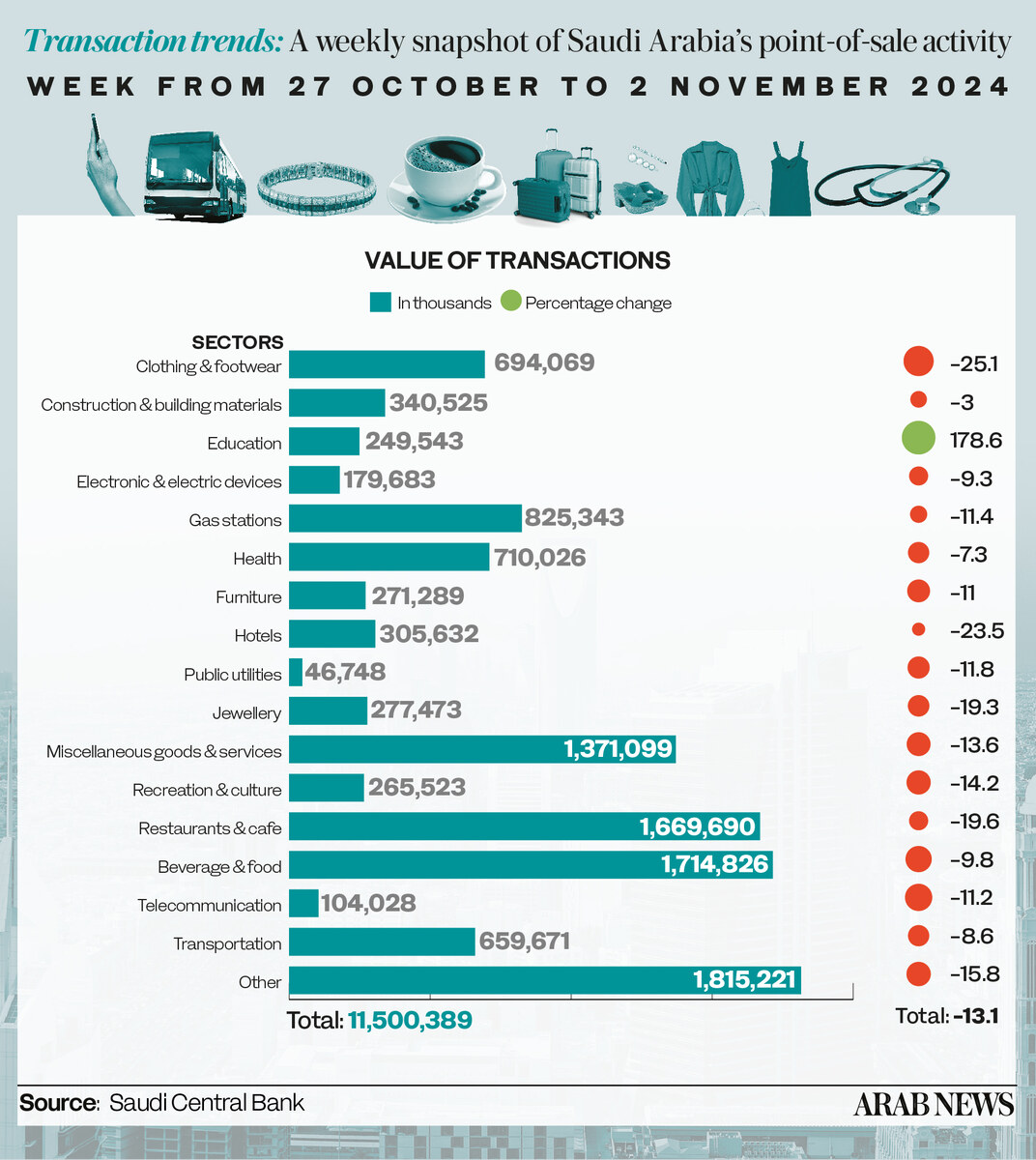RIYADH: Education spending in Saudi Arabia soared 178.6 percent to SR249.5 million ($66.4 million) during the week of Nov. 17–23, bucking the broader decline across other sectors.
According to the Saudi Central Bank’s weekly point-of-sale transactions bulletin, education was the sole sector to record growth. Transactions in the category climbed 62.3 percent to 164,000.
By contrast, other consumer spending categories experienced sharp declines. Clothing and footwear posted the steepest drop, falling 25.1 percent to SR694 million. Hotel expenditures followed, dipping 23.5 percent to SR305.6 million.
Spending in restaurants and cafes, which accounted for the second-largest share of total POS value, decreased 19.6 percent to SR1.66 billion.
Overall, Saudi Arabia’s POS transactions shrank 13.1 percent week on week, with total expenditures declining to SR11.5 billion from SR13.2 billion in the prior week.
The central bank’s figures showed that the electronics sector saw a 9.3 percent slide to SR179.6 million, while telecommunications expenditures dropped 11.2 percent to SR104 million.

The food and beverages category — the largest contributor to POS transactions — saw a 9.8 percent dip to SR1.7 billion. Miscellaneous goods and services, which ranked third, fell 10.6 percent to SR1.3 billion. Together, the top three categories accounted for 41.3 percent, or SR4.7 billion, of the week’s total transaction value.
At 3 percent, the smallest decrease occurred in spending on construction and building materials, leading total payments to SR340.5 million. Expenditures in the health sector dipped by 7.3 percent to SR710 million.

Regional insights
Geographically, Riyadh dominated POS transactions, representing 35.9 percent of the total, with expenses in the capital reaching SR4.1 billion — an 8.2 percent decrease from the previous week.
Jeddah followed with a 14.2 percent dip to SR1.5 billion, and Dammam came in third at SR590.5 million, down 7.9 percent.
Hail experienced the most significant dip in spending, decreasing 20 percent to SR177.4 million. Tabouk and Abha recorded declines by 11.4 percent and 9.8 percent reaching SR209 million and SR134.9 million, respectively.
Makkah and Madinah saw the largest transaction decreases, falling 15.2 percent and 14.9 percent, respectively, to 7.6 million and 7.8 million transactions.





























